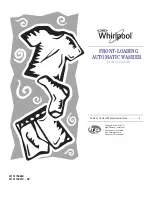
36/140
Siemens
RXB (KNX) Applications library
CLC and RAD description of functions for CC-02 CM110384en_03
Building Technologies
Room operating modes
28 Feb 2009
The following S-mode communication object is used for schedule usage
from a building
automation and control system:
Time schedule Use
(input communication
object)
Flags
R W C T U
Type Receive
timeout
States
0 1 1 0 0 20.002
DPT_BuildingMode
Yes
0 = In use
1 = Not in use
2 = Protection
5.3.3
Central and local control of room operating mode
based on occupancy
S
Central
Local
1.
2.
3.
S
DI
S
S
S
DI
S
3.
Controller
Prio
PPS2
3.
S
The
Effective occupancy
is determined by the
occupancy
schedule and the presence detector.
It controls the room operating mode of a room
controller while the building is in use.
The central time schedule transmits the anticipated occupancy of a room or group of
rooms. It controls the room operating mode of a room controller while the building is in
use. Outside the building-in-use period, the time schedule is disabled.
The time schedule can be used, e.g. by a building tenant to specify occupancy times of
his or her rooms.
The
occupancy
schedule
has three possible states:
State
Description
Occupied
•
Occupancy expected.
•
Room controller switches to
Comfort.
Standby
•
Occupancy is probable; the room must be ready for use shortly
(
Comfort
temperature).
•
Room controller switches to
Precomfort.
Unoccupied
•
No occupancy expected.
•
Room controller switches to
Economy.
A presence detector detects the presence of people in a room.
It controls the room operating mode of a room controller while the building is in use.
Outside the building-in-use period, it is disabled.
KNX
R
CO
Occupancy
schedule
Presence
detector






































